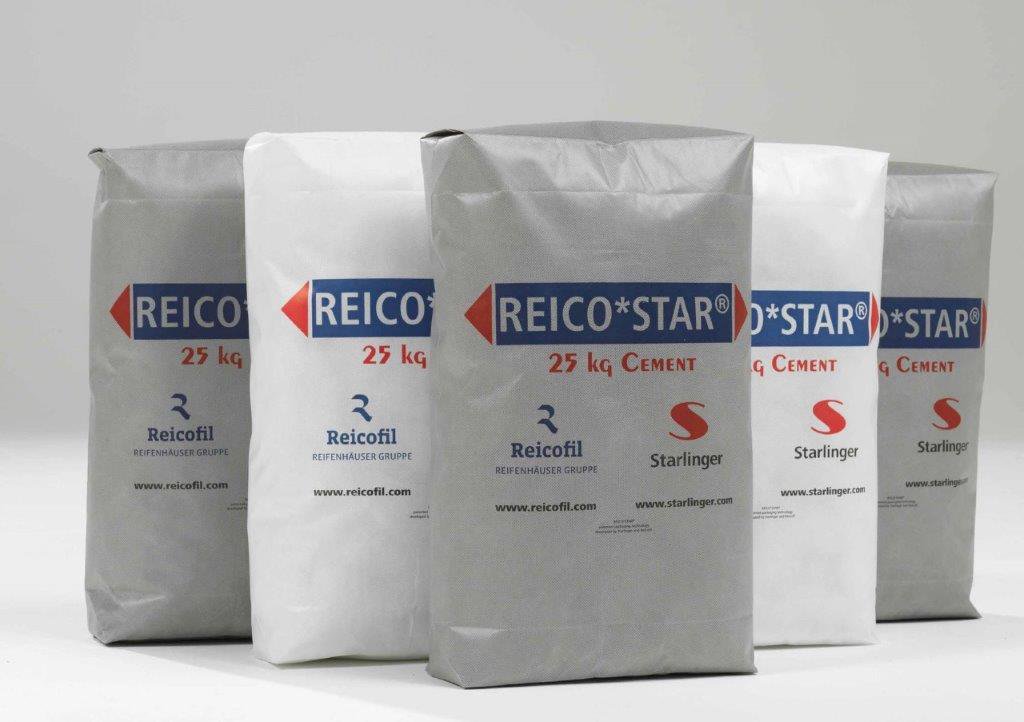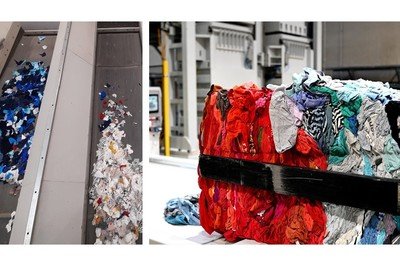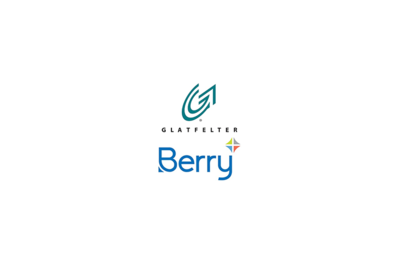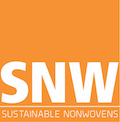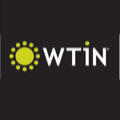
The synergies between knitted and woven fabrics and randomly-laid nonwovens – along with the separate benefits of viscose and PLA in a highly-engineered absorbent core – are exploited to the full in a new diaper which is now being marketed by Berlin-based design studio Sumo.
Such hybrid products are increasingly gaining traction in the bid to minimise the waste portion of absorbent hygiene products (AHPs).
Dilemma
Up to the age of three, a baby uses around 5,000 diapers which generates an enormous amount of plastic waste – in Germany alone, ten million diapers are disposed of every day.
There are two ways to solve this dilemma – either disposable products are made from bio-based or biodegradable materials, or reusable products with a longer life span replace disposable products.
Sumo founding team Luisa Kahlfeldt and Caspar Böhme have combined both options, creating a reusable cloth diaper that is made entirely of sustainable materials while offering high performance and an innovative design.
The fitted Sumo diaper consists of a waterproof cover and absorbent inserts. The cover is sewn to create a pocket in which the absorbent pad is inserted to prevent slippage.
To further enhance the performance of the absorbent pad, the Sumo team turned to INDEXTM2023 exhibitor Kelheim Fibres.
“Kelheim’s speciality fibres are a perfect fit for us,” said Luisa Kahlfeldt. “Like all the fabrics we have developed for Sumo diapers, the fibres in the insert developed with Kelheim are based on cellulose and are biodegradable. They are as good for a baby’s skin as they are to the environment and thanks to their targeted functionality, they outperform other cellulosic fibres, as well as synthetics.”
High absorbency
Kelheim brought decades of experience from the hygiene sector to the project, especially for sensitive applications where high absorbency is required, such as tampons.
Together, Sumo and Kelheim Fibres developed a high-performance absorbent pad that uses no fossil materials.
Needlepunched and thermobonded nonwovens with a blend of adapted cross-section viscose and PLA bicomponent fibres were chosen to ensure the product’s washability.
Inside the pad, fibres from Kelheim provide special properties. In the acquisition and distribution layer (ADL), the trilobal cross-section of Galaxy fibre forms capillary channels that enable efficient and optimised liquid distribution and optimum use of the capacity of the absorbent core, offering the lowest rewet values.
In the absorbent core, Bramante segmented hollow fibres stores liquid not only between but also inside the individual fibres themselves. The liquid remains there even when pressure is applied to the construction, providing excellent rewet values. Bramante can absorb up to 260% of its own weight in liquid compared to cotton.
The core performs significantly better in tests in terms of air permeability, liquid absorption and rewetting than commercially available solutions made of synthetic fibres or cotton in knitted structures.
Open innovation
“Our open innovation concept aims at dialogue and the acceleration of the commercialisation of innovative solutions,” said Dr Marina Crnoja-Cosic, director of new business development at Kelheim. “In this specific example, it has been shown that together with our partners, STFI – the Saxon Textile Research Institute – and Sumo, we have been able to react faster and more specifically to current trends. By joining forces, we have developed a product that optimally combines performance and sustainability.”
The two main requirements for the Sumo diaper were obvious, she added – a fast and efficient liquid distribution and high absorbency to minimise rewetting and leakage.
“Both are ensured by our speciality viscose fibres which have been making this essential contribution to AHPs such as tampons for many years. The obvious solution was therefore to optimally utilise the synergies between knitted and woven structures with nonwovens. In doing so, the advantages of nonwovens in combination with speciality viscose fibres in terms of absorbency through more open-pored structures have been perfectly transferred from the field of disposables to the world of reusable products.”
For reusable products, she added, there is another challenge to overcome.
“They must remain stable during washing and over several cycles of use. To ensure this, a nonwoven construction was developed in close cooperation with the STFI. These nonwovens can be used as a stand-alone solution or integrated into a textile structure. In the Sumo cloth diaper, the liquid management of the absorbent pad sets new standards. The new solution proves that high-performance reusable absorbent products can be developed without fossil materials.”
Reico*Star
On the nonwovens technology front, Reifenhäuser Reicofil is also taking something of a targeted mix and match approach with its new Reico*Star line.
It is engineered to produce high-performance nonwoven-film composites for packaging, such as sacks or so-called ‘big bags’ for free-flowing bulk materials like cement, grain or animal feed, as well as medical packaging.
The chief advantages of combining film and nonwoven production in a single line are that the resulting monomaterial products are fully recyclable and a 25% reduction in raw materials can also be achieved. At the same time, compared to paper-film composites, the barrier effect against moisture and air permeability is increased by the nonwoven to enable air-conveyed filling.
In medical packaging, the material combination also enables the steam sterilization of fully packaged products.
The manufacturing process combines the Reicofil RF5 BiCo spunbond line with an extrusion coating line from sister company Reifenhäuser Cast Sheet Coating. Another INDEXTM2023 exhibitor, Starlinger, the market leader in machine and process technology for woven plastic sacks, was also involved in the development of the Reico*Star.
“With this line and the process behind it, we have shown that nonwoven film composites are a sustainable and economical alternative to paper-film composites,” said Dr Andreas Rösner, who is responsible for strategic product development at Reifenhäuser Reicofil. “They also offer a better moisture barrier and a higher-quality feel. There is enormous potential for companies to participate in the growing demand for fully recyclable packaging products with this new hybrid line.”


